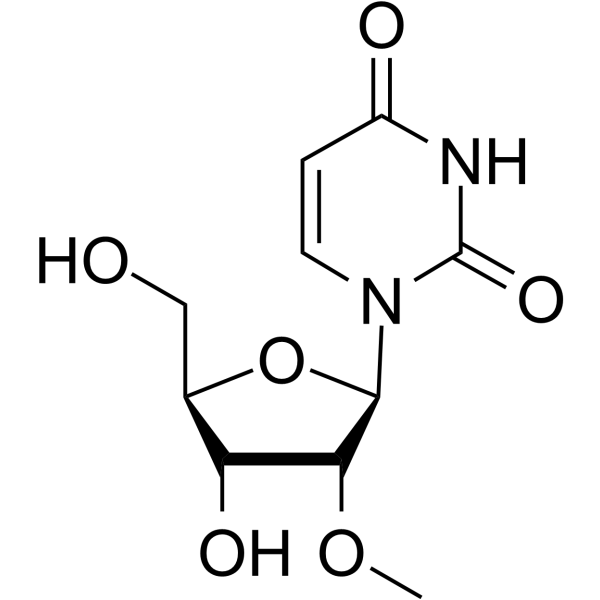
2′-O-Methyluridine
CAS No. 2140-76-3
2′-O-Methyluridine( —— )
Catalog No. M29484 CAS No. 2140-76-3
2′-O-Methyluridine is a natural product that found in RNA such as rRNA, snRNA, snoRNA and tRNA in Archaea, Bacteria, and Eukaryota.
Purity : >98% (HPLC)
 COA
COA
 Datasheet
Datasheet
 HNMR
HNMR
 HPLC
HPLC
 MSDS
MSDS
 Handing Instructions
Handing Instructions
| Size | Price / USD | Stock | Quantity |
| 5MG | 49 | In Stock |


|
| 100MG | Get Quote | In Stock |


|
| 200MG | Get Quote | In Stock |


|
| 500MG | Get Quote | In Stock |


|
| 1G | Get Quote | In Stock |


|
Biological Information
-
Product Name2′-O-Methyluridine
-
NoteResearch use only, not for human use.
-
Brief Description2′-O-Methyluridine is a natural product that found in RNA such as rRNA, snRNA, snoRNA and tRNA in Archaea, Bacteria, and Eukaryota.
-
Description2′-O-Methyluridine is a natural product that found in RNA such as rRNA, snRNA, snoRNA and tRNA in Archaea, Bacteria, and Eukaryota.
-
In Vitro——
-
In Vivo——
-
Synonyms——
-
PathwayOthers
-
TargetOther Targets
-
Recptor——
-
Research Area——
-
Indication——
Chemical Information
-
CAS Number2140-76-3
-
Formula Weight258.23
-
Molecular FormulaC10H14N2O6
-
Purity>98% (HPLC)
-
SolubilityIn Vitro:?DMSO : 100 mg/mL (387.25 mM)
-
SMILESCO[C@@H]1[C@H](O)[C@@H](CO)O[C@H]1n1ccc(=O)[nH]c1=O
-
Chemical Name——
Shipping & Storage Information
-
Storage(-20℃)
-
ShippingWith Ice Pack
-
Stability≥ 2 years
Reference
molnova catalog



related products
-
Cortistatin 14, huma...
Cortistatin 14 is a somatastatin-like neuropeptide with neuronal depressant and sleep modulating properties. Cortistatin 14 is present primarily in the cortex and hippocampus.
-
Compound TCFN92660
Hispidin is a natural product, protein kinase C inhibitor, which belongs to the group of 2-pyrones and catechols.
-
G250.A2
G250.A2



 Cart
Cart
 sales@molnova.com
sales@molnova.com


